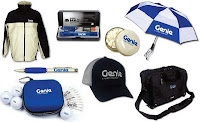-------------------------------
These are the stats we've been able to confirm; please share if you've got more numbers.
(1) iTunes
* Paid Song Downloads: 15 billion, cumulative since mid-2003 (source: Apple, shared this week.)
* Broader Story: Annual gain-rate of about 4 billion; iCloud $25 annual subscriptions start this fall.
(2) Spotify
* Paying Subscribers: 1,000,000+ (per Spotify, as shared early March, 2011)
* Subscriber Mix: Roughly 10 percent are paying; Spotify says the number is closer to 15 percent when measured by active users. Within paid tiers, 90% appear to be paying full premiums (source: Digital Music News, citing statements and information from European partner sources)
* Royalty Payouts: 43 million euros ($58.5 million) in 2010 (source: Spotify, shared with ballade.no earlier this year).
(3) Sirius XM Radio
* Paying Subscribers: 20.6 million (per first quarter company disclosures). Ranking: Sirius is the third largest entertainment-related subscription service in terms of subscribers, trailing Netflix and Comcast.
(4) Pandora
* Registered users: 90+ million (per SEC filings, June 2nd.) Of note: Subscription and other premium payments accounted for 13.6 of total revenues, according to February disclosures. Pandora has counted more than 10 billion thumbs, though they are not yet profitable (as of April, 2011).
(5) Rhapsody
* Paying Subscribers: 750,000 (per Rhapsody president John Irwin, January 20th). Of note: Increase of 100,000 since April, 2010; awaiting half-year updates (company is preparing to announce a major increase, according to conversations with the company).
(6) Slacker
* Paying Subscribers: 'Well past 300,000' and growing (source: Slacker, to Digital Music News on Wednesday.)
(7) eMusic
* Paying Subscribers: 400,000 (per eMusic disclosures to Digital Music News, November 15th). Of note: Zero subscriber growth since 2007.
(8) Rdio
* Paying Subscribers: Company will not disclose to Digital Music News.
(9) MOG
* Paying Subscribers: Company will not disclose to Digital Music News.
(10) Vodafone UK
* 100,000 paying music subscribers (per Vodafone content services director Lee Epting at MidemNet 2011). Of note: Global goal is 1 million by 2012.
(11) Napster
* Paying Subscribers: 760,000 as of the Best Buy purchase (May, 2008). Current number unknown, likely smaller.
-----------------------------------
Help support this blog. Any purchases made through our Amazon links help support this website with no cost to you.You should follow me on Twitter for daily news and updates on production and the music business.
Check out my Big Picture blog for daily discussion of music, recording, and production tips and tricks.





